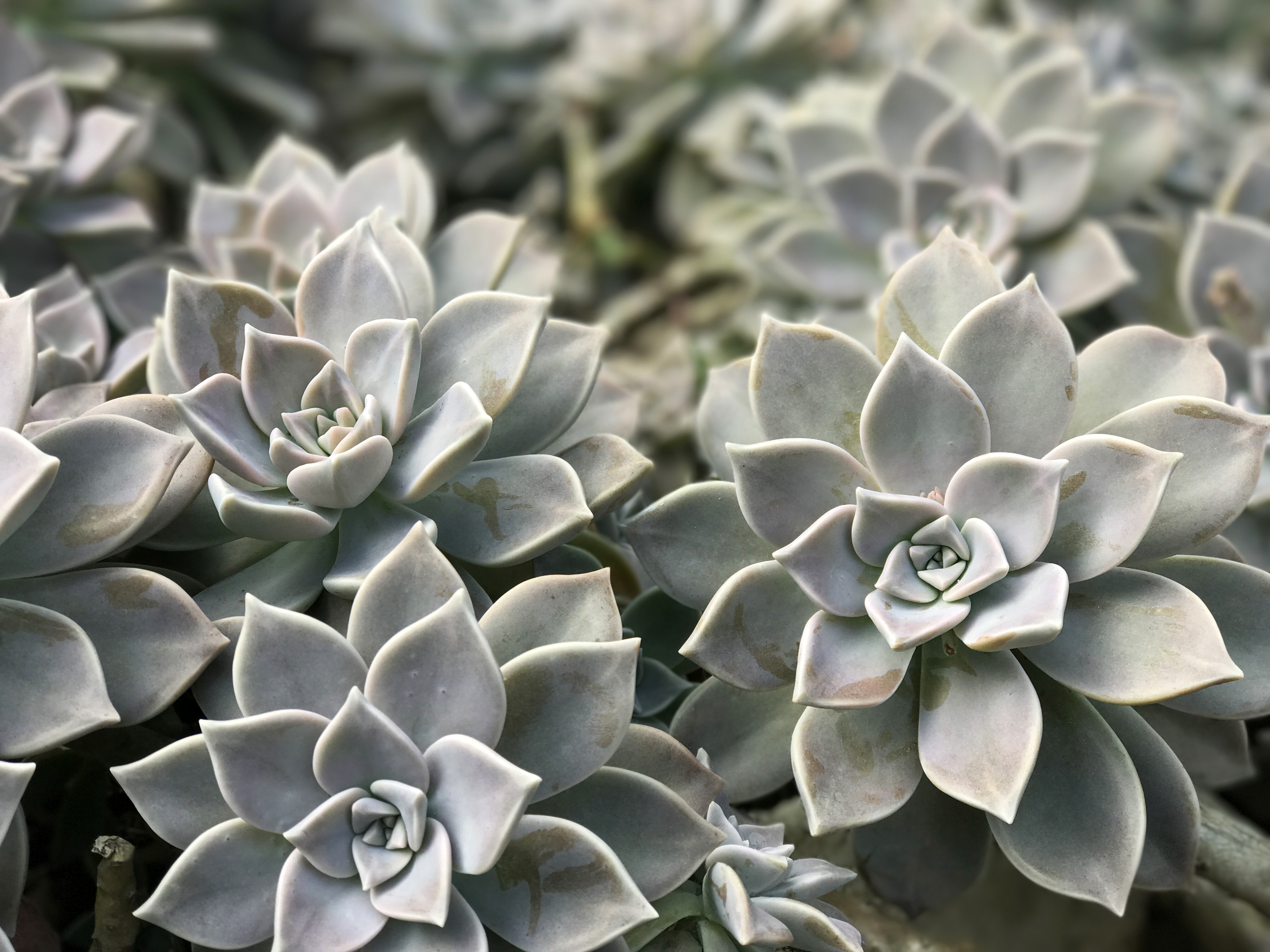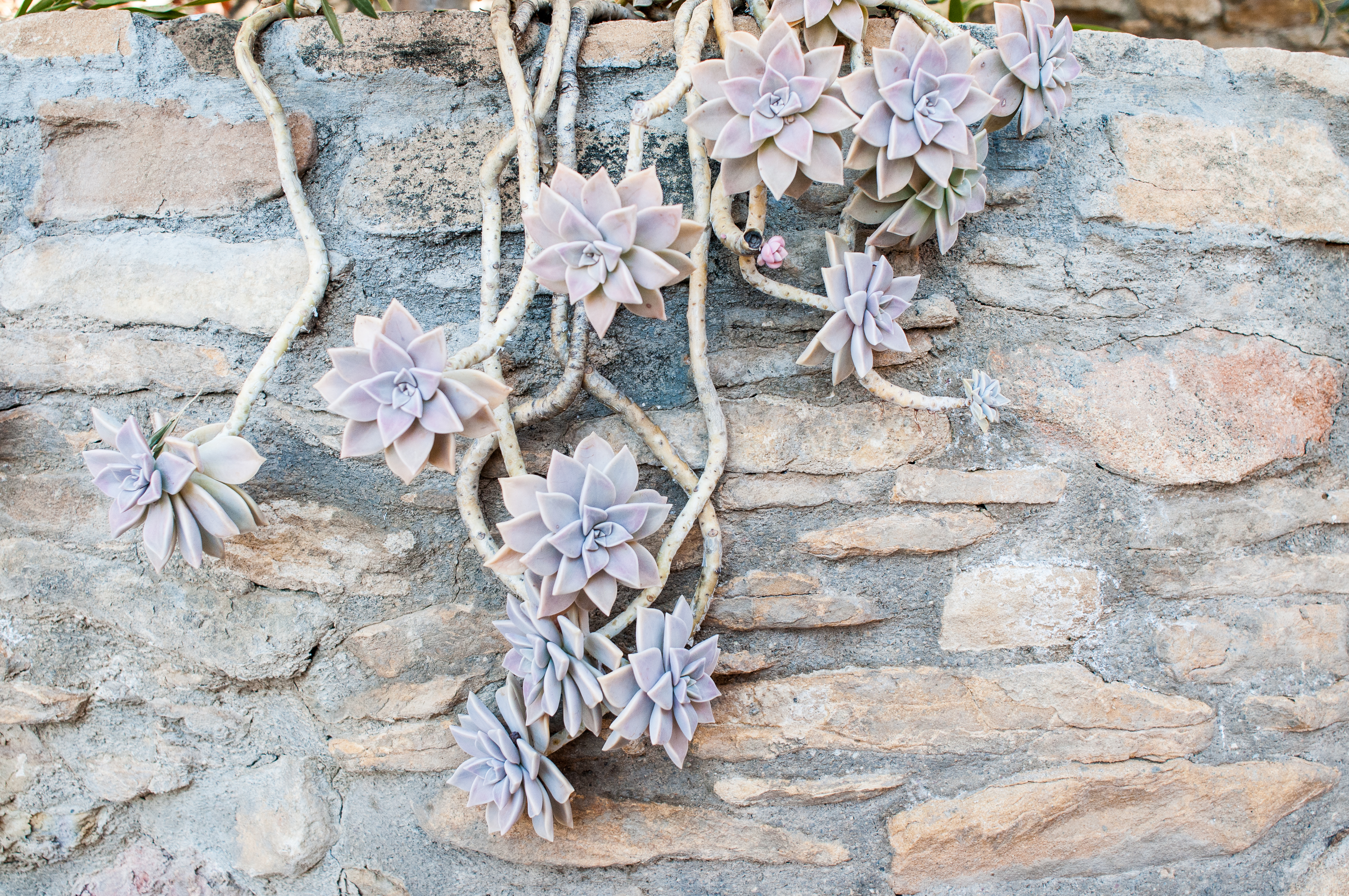Origin
Graptopetalum paraguayense , commonly known as a Ghost plant, is a light gray succulent that has rocketed in popularity in recent years, although it first started out as a houseplant over a century ago! It's commonly found as part of faux plant arrangements, however, the real thing is very simple to care for.
Its Latin name may make you think that it originates from Paraguay, but it's actually native to the Chihuahuan Desert in Mexico.
The 'Ghost' name comes from its pale color. This is due to a coating of white, powdery-looking wax known as 'farina'. Many succulents have developed this as a way of protecting their leaves from harsh sunlight. However, farina can easily be damaged when the leaves are handled or if, for example, you accidentally get water or neem oil directly on the leaves. Because of this, it's a good idea to avoid handling your Ghost Plant and take care to only water directly onto the soil.
This plant's light, pearlescent coloring also gives it the alternative common name 'Mother of Pearl Plant'.

Care
Ghost Plants store water in their thick, flat leaves, meaning that they can go extended periods of time without water as they have adapted to live in hot, arid deserts. As such, they don't need much water when kept as a houseplant - only water once the soil is dry throughout the pot.
They like to get plenty of sunlight and will achieve their best colors this way. Note that prolonged exposure to harsh, direct sunlight will cause the farina layer to thicken. If possible, provide your Ghost Plant with bright but filtered light (such as through a sheer curtain) in order to avoid damaging the foliage.
Also, like most succulents, your Ghost Plant does not like the cold! Try to protect it from exposure to frost. If you keep yours outdoors then make sure to bring it inside for the winter.

Other
Their rosettes can grow up to 6 inches (15 cm) in diameter, and when allowed to trail, these plants can grow quite tall too - up to 1 ft (60 cm). As such, they make an impressive-looking choice for a hanging basket.
Leaves can turn warm white, pinkish or yellow in hot and warm conditions and blue-grey in partial shade.
Another pro of Ghost Plants is that they're extremely disease-resistant. The easiest way to kill it, like with other succulents, is by overwatering .
How to propagate your Ghost plant
Ghost Plants can be easily propagated and will do so of their own accord (by dropping their leaves). This makes them a simple introductory plant if you're new to propagation. You can propagate yours either by cuttings or using their leaves.
To propagate using a leaf
Take a mature, healthy mother plant and gently twist off one of the leaves. Try to get as close to the stem as possible in order to maximize the chance of success.
Place it on a paper towel and allow it to dry out for a few days. This will cause the 'broken' end to form a callus, which helps prevent rot.
Then, take the leaf and place it on soil, preferably a well-draining mix. Water your propagation only once the soil has dried out.
To propagate using a cutting
Using a cutting will provide a quicker way to get a full plant out of your propagation.
Take a sterile knife and make a cut along the stem, just above one of the leaves.
As above, allow it to dry out before planting it in order to help increase the chances of your propagation succeeding. Then just plant it in soil and ensure it doesn't get too wet.
If your propagations don't succeed at first, don't worry! Sometimes it just doesn't work out, but you can always try again. Just ensure that your parent plant is healthy and has some time to recover between attempts.